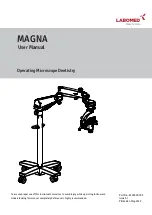
Ultra Tugger
®
10 Cable Puller and Pulling Packages
Greenlee / A Textron Company
4455 Boeing Dr. • Rockford, IL 61109-2988 USA • 815-397-7070
19
Cable Pulling Principles
(cont’d)
Summary of Cable Pulling Principles
• A cable pulling system consists of many components
that work together to accomplish a pull.
• The cable puller is rated by its maximum pulling
force; every other component is rated by its maximum
rated capacity. The maximum rated capacity of every
component must meet or exceed the maximum
pulling force of the cable puller.
• The cable puller must overcome two types of resis-
tance: gravity and friction. The puller’s capstan, the
pulling rope, and the operator tailing the rope work
together to produce pulling force.
• The cable puller exerts force on every component
of the cable pulling system, including the anchoring
systems and the support structures.
• Energy is stored in a rope when the load causes
the rope to stretch. Failure of the rope or any other
component can cause a sudden release of energy.
Replace any rope that is worn or damaged.
• Carefully select the number or wraps of rope around
the capstan before starting the pull.
• Control the pull by tailing the rope. Be familiar with the
interaction of the rope and capstan.
• Do not allow a rope overlap to develop.
Planning the Pull
• Pull in a direction that will require the lowest amount
of pulling force.
• Plan several shorter pulls rather than fewer longer
pulls.
• Locate the puller as close to the end of the conduit
as possible to minimize the amount of exposed rope
under tension.
• Place each component so that the pulling forces are
used effectively.
• Select an anchoring system: adapter sheaves, which
are preferred, or the floor mount.
• Verify that each component has the proper load
rating.
• Inspect the structural supports. Verify that they have
enough strength to withstand the maximum forces
that may be generated.
















































